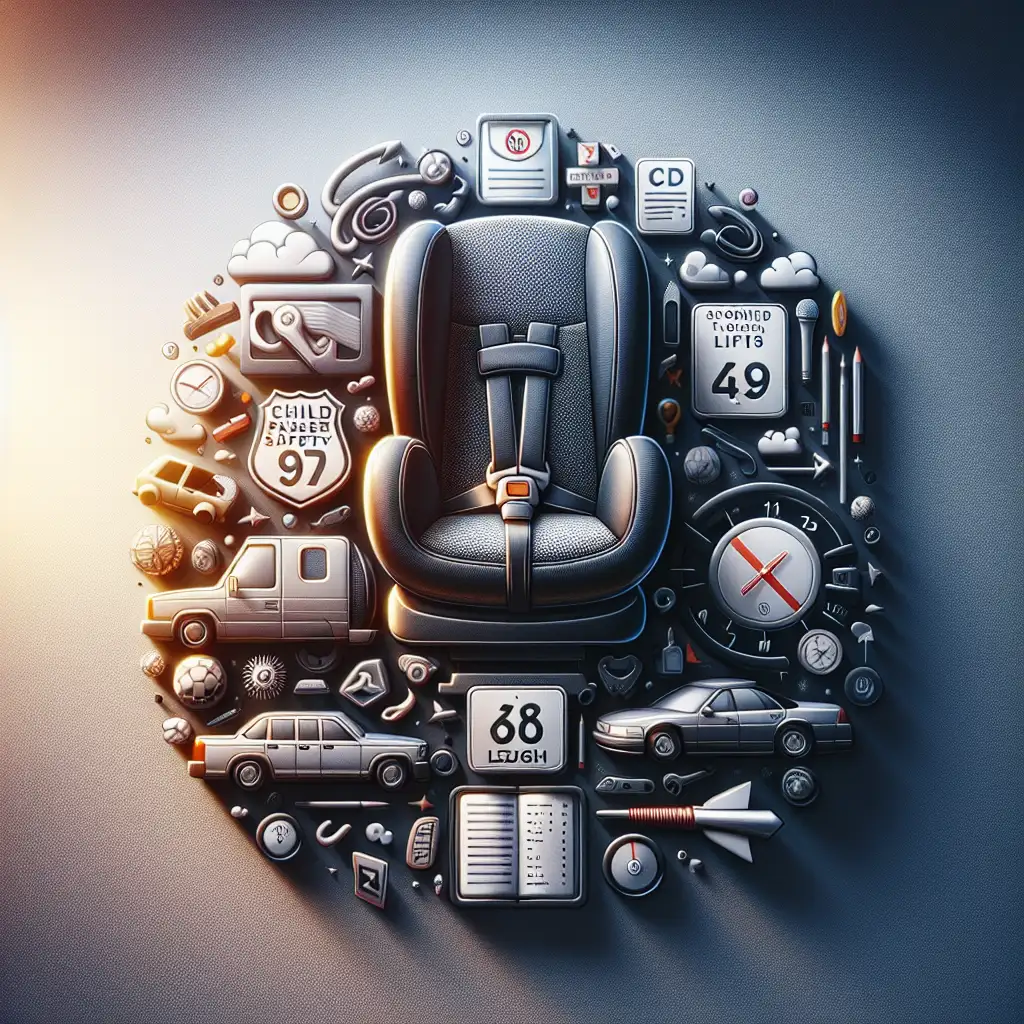Child Passenger Safety Laws You Should Know
An overview of regulations regarding child restraints and seats to ensure your child's safety on the road.

Ensuring the safety of child passengers is a top priority for parents and guardians. Understanding the laws and regulations regarding child restraints and seats is crucial for protecting young passengers on the road. This article provides an overview of the essential child passenger safety laws you should be aware of.
Why Child Passenger Safety Laws Matter
Child passenger safety laws are designed to protect children from injury or death in the event of a car accident. According to the National Highway Traffic Safety Administration (NHTSA), car crashes are a leading cause of death for children in the United States. Proper use of car seats, booster seats, and seat belts can significantly reduce the risk of injury.
Understanding Child Restraint Systems
Child restraint systems include car seats, booster seats, and seat belts. These systems are designed to accommodate children of different ages, weights, and heights. It's important to choose the right system based on your child's specific needs.
Car Seats
Car seats are typically used for infants and toddlers. They are designed to provide maximum protection by securing the child in a rear-facing or forward-facing position. Rear-facing car seats are recommended for infants and young toddlers, as they offer better support for the head, neck, and spine.
Booster Seats
Booster seats are used for older children who have outgrown their car seats but are not yet large enough to use a seat belt alone. Booster seats help position the seat belt correctly across the child's chest and lap, reducing the risk of injury in a crash.
Seat Belts
Once a child is large enough, they can transition to using a seat belt. It's important to ensure that the seat belt fits properly, with the lap belt lying snugly across the upper thighs and the shoulder belt crossing the chest and shoulder.
Key Child Passenger Safety Laws
Child passenger safety laws vary by state, but there are some common regulations that most states follow. Here are some key points to consider:
- Rear-Facing Car Seats: Many states require children to ride in a rear-facing car seat until at least age two or until they reach the maximum height and weight limit for the seat.
- Forward-Facing Car Seats: After outgrowing a rear-facing seat, children should use a forward-facing car seat with a harness until they reach the seat's height and weight limits.
- Booster Seats: Children who have outgrown their forward-facing car seats should use a booster seat until they are tall enough to fit properly in a seat belt, typically when they are 4'9" tall.
- Seat Belts: Once children are large enough, they should use a seat belt. It's important to ensure the seat belt fits properly to provide adequate protection.
Common Questions About Child Passenger Safety
When Can My Child Transition to a Booster Seat?
Children can transition to a booster seat once they have outgrown their forward-facing car seat. This typically occurs when they reach the maximum height or weight limit for the car seat, which is usually around 65 pounds.
How Do I Know If My Child Is Ready for a Seat Belt?
Your child is ready for a seat belt when they can sit with their back against the vehicle seat, knees bent over the edge, and feet flat on the floor. The seat belt should fit snugly across the upper thighs and chest.
Are There Penalties for Not Complying with Child Passenger Safety Laws?
Yes, failing to comply with child passenger safety laws can result in fines and penalties. More importantly, non-compliance increases the risk of injury to your child in the event of a crash.
Conclusion
Understanding and adhering to child passenger safety laws is essential for protecting your child on the road. By using the appropriate car seat, booster seat, or seat belt, you can significantly reduce the risk of injury in the event of an accident. Always check your state's specific laws and guidelines to ensure compliance and maximize your child's safety.
 CarChooser
CarChooser